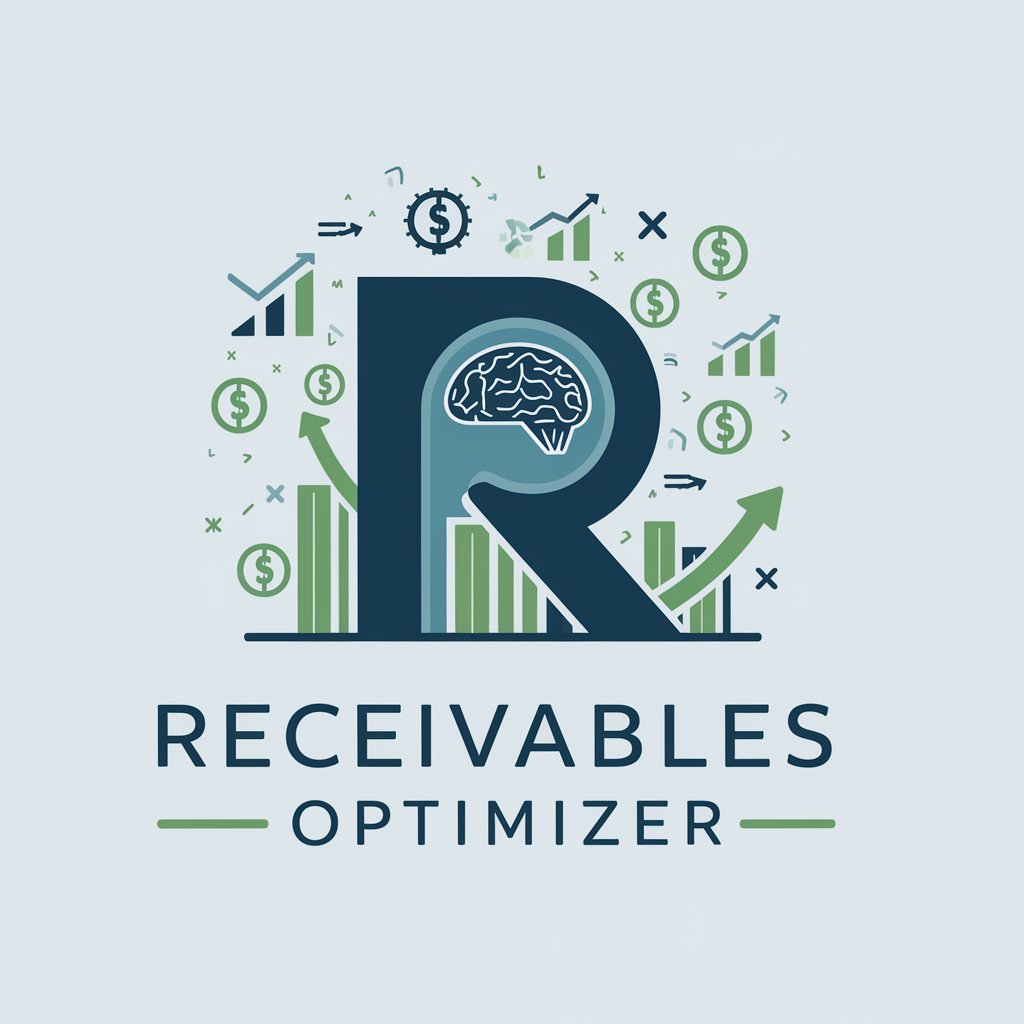Accounts Receivable - Accounts Receivable Optimization

Welcome! How can I assist you with optimizing your accounts receivable today?
Streamline receivables with AI-powered insights.
How can I improve my accounts receivable turnover rate?
What strategies can I use to optimize cash flow?
Can you analyze my receivables data to identify issues?
What are the best practices for managing accounts receivable?
Get Embed Code
Understanding Accounts Receivable
Accounts Receivable (AR) refers to the outstanding invoices a company has or the money owed by clients. Its basic function within a business is to manage and collect payments from customers for products or services that have been delivered but not yet paid for. This financial measure is crucial for a company's cash flow, as it represents the line of credit extended to customers, typically with terms that require payments within a short period, such as 30, 60, or 90 days. A detailed example illustrating this aspect could involve a manufacturing company that sells machinery to a retailer on net-30 terms. This means the retailer has 30 days to pay the invoice amount. The manufacturer's AR would include the total invoice amount due from the retailer until payment is received, impacting cash flow and financial planning. Powered by ChatGPT-4o。

Key Functions of Accounts Receivable
Invoice Management
Example
Generating and sending invoices to clients after a sale or service is completed.
Scenario
A graphic design firm completes a project for a client and issues an invoice for the work. The AR department ensures the invoice details the services provided, the amount due, and the payment terms, then tracks this invoice until payment is received.
Payment Tracking and Reconciliation
Example
Monitoring incoming payments and reconciling them with the corresponding invoices.
Scenario
A construction company receives a payment from a client. The AR team matches this payment to the outstanding invoice, updating the company's financial records to reflect the payment and adjusting the client's balance.
Credit Management
Example
Assessing the creditworthiness of clients and setting credit limits.
Scenario
Before entering into a sales agreement with a new client, a wholesaler evaluates the client's credit history and financial health to determine a suitable credit limit, thereby managing risk and ensuring healthy cash flow.
Collections Management
Example
Actively pursuing overdue payments while maintaining customer relationships.
Scenario
An IT service provider follows up with clients who have past-due invoices, using reminders and communication to encourage payment while striving to preserve a positive business relationship.
Target Users of Accounts Receivable Services
Small and Medium Enterprises (SMEs)
SMEs often lack the extensive resources of larger corporations to manage AR efficiently. They benefit significantly from AR services by improving cash flow, reducing administrative burden, and focusing on core business activities.
Large Corporations
While they may have more resources, the complexity and volume of transactions in large corporations make AR services invaluable for maintaining efficient operations, minimizing bad debt, and optimizing financial planning.
Startups
Startups operating in fast-paced environments need to maintain healthy cash flows and minimize administrative tasks. AR services can help them establish solid financial practices early on, ensuring sustainability and growth.

How to Utilize Accounts Receivable
Start Your Journey
Begin by visiting yeschat.ai to access a free trial without the need for a login, eliminating the requirement for ChatGPT Plus.
Input Data
Enter your business's accounts receivable and payment data, ensuring accuracy for optimal analysis.
Explore Features
Familiarize yourself with the dashboard and tools available for tracking, analyzing, and managing receivables.
Implement Strategies
Use the insights and recommendations provided to improve your accounts receivable turnover and enhance cash flow.
Review and Adjust
Regularly review the performance metrics and adjust your strategies as needed to keep improving your financial health.
Try other advanced and practical GPTs
Serene Space Harmony
Harmonizing spaces with AI-powered Feng Shui

Russian Tutor
Master Russian with AI-Powered Tutoring

Guided Meditation
Elevate Your Mind with AI-Powered Meditation

Dictionary Assist AI
Empowering language mastery with AI.

Gyno Guide
Empowering gynecological health with AI

CodeCraft & Data Navigator
Empowering data management and API innovation with AI.

하티 뉴질랜드여행 AI
Explore New Zealand with AI-powered insights.

Business Idea Spark
Igniting your entrepreneurial journey with AI-powered innovation.

Screenwriter
Empowering Your Screenwriting with AI

VerseVista
Bringing Your Words to Life with AI

Tamil GPT
Empowering Tamil Knowledge with AI

Employer Brand Story Guide
Craft Compelling Employer Narratives with AI

Detailed Q&A on Accounts Receivable
What exactly does Accounts Receivable do?
Accounts Receivable assists businesses in managing their receivables by tracking invoices, analyzing payment data, and offering strategies to improve turnover rates and cash flow.
How can Accounts Receivable improve my business's cash flow?
By providing detailed insights into your receivables and payment habits, it helps identify areas for improvement and strategies to expedite payment collection, thus enhancing cash flow.
Is technical knowledge required to use Accounts Receivable?
No, the tool is designed to be user-friendly. Basic knowledge of your business's accounts receivable process is sufficient to get started.
Can Accounts Receivable help with late payments?
Yes, it offers strategies and recommendations to minimize late payments, including adjusting credit policies and enhancing communication with customers.
How often should I review my accounts receivable performance?
Regular review, at least monthly, is recommended to effectively manage your receivables, spot trends, and adjust strategies as needed for optimal financial health.
